telescope
Latest
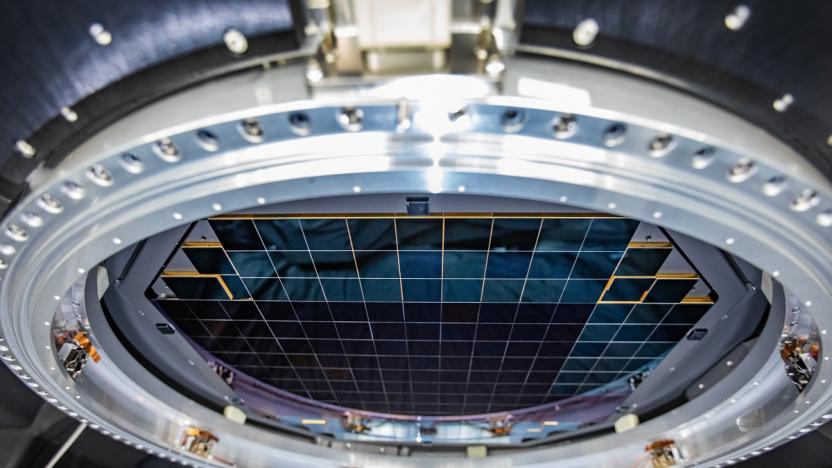
Researchers capture the world's first 3,200-megapixel digital photo
Stanford researchers have taken 3,200-megapixel photos, the largest-ever, using sensors that will be part of the world’s largest digital camera, according to a SLAC National Accelerator Laboratory blog post. The camera will be installed in the university’s Legacy Survey of Space and Time (LSST) telescope in Chile, which will study dark energy, dark matter and create the “largest astronomical movie of all time.” You can also see small, dim objects other cameras can’t capture -- the resolution is so high that you could see a golf ball from 15 miles away, and the sensors can spot objects 100 million times dimmer than visible with the naked eye.

Puerto Rico’s Arecibo radio telescope suffers serious damage
A broken cable damaged the Arecibo Observatory, the second-largest radio telescope in the world.

NASA will deploy a huge stratospheric balloon to study newborn stars
NASA plans to send an 8.4 foot telescope into the upper stratosphere aboard a “football stadium” sized balloon. ASTHROS (astrophysics stratospheric telescope for high spectral resolution observerations at submillimeter-wavelengths) will study the gases around newly-formed giant stars by observing the far-infrared light they emit.

China's giant radio telescope will start searching for aliens in September
China's FAST radio telescope will join the search for signs of extraterrestrial life in September.
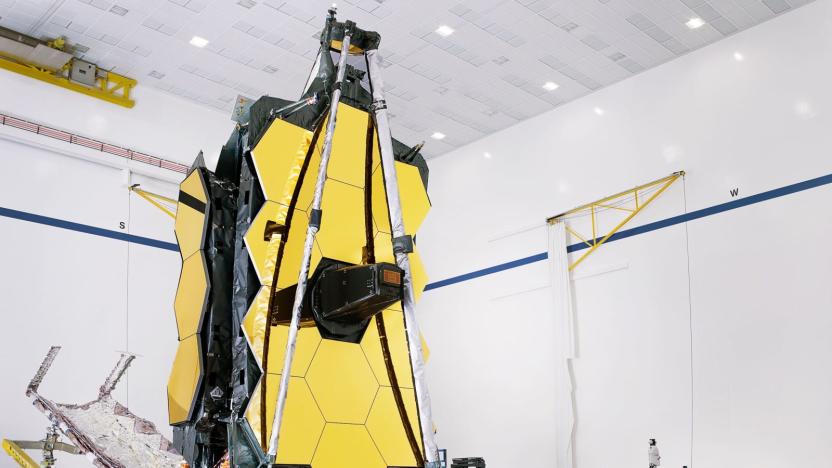
NASA successfully deploys the James Webb Telescope's enormous mirror
The huge mirror of NASA's James Webb Space Telescope -- its successor to Hubble -- has been successfully tested for the first time, putting it one step closer to its eventual launch, which is slated for 2021. Like Hubble -- which has long outlived its original lifespan but is expected to remain operational for a few years yet -- the James Webb will investigate celestial bodies from our solar system and beyond.

Capturing the Sun's Texas-sized cells in the highest detail ever
The Daniel K. Inouye Solar Telescope (DKIST) started with some controversy, but its first images are already changing the field of solar science. The Maui observatory captured the highest-resolution photos of the sun ever taken, revealing detail down to a mere 18 miles in size. The image above shows turbulent kernel-like cells made up of boiling gases influenced by the Sun's strong magnetic field, each one about the size of Texas.
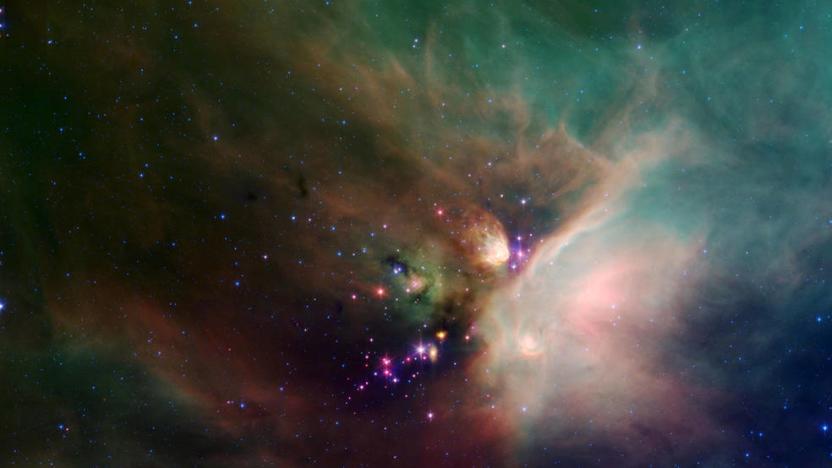
NASA decommissions Spitzer Space Telescope after 16 years of service
NASA is flipping the switch on the Spitzer Space Telescope today. The observatory has made groundbreaking discoveries about the universe since its launch in 2003, from imaging some of the oldest stars in the universe to detecting the light reflected by exoplanets. The Spitzer was previously scheduled to go offline in 2018, but has continued operating due to NASA's followup telescope being postponed. With the James Webb Space Telescope nearing completion, Spitzer's mission is over.
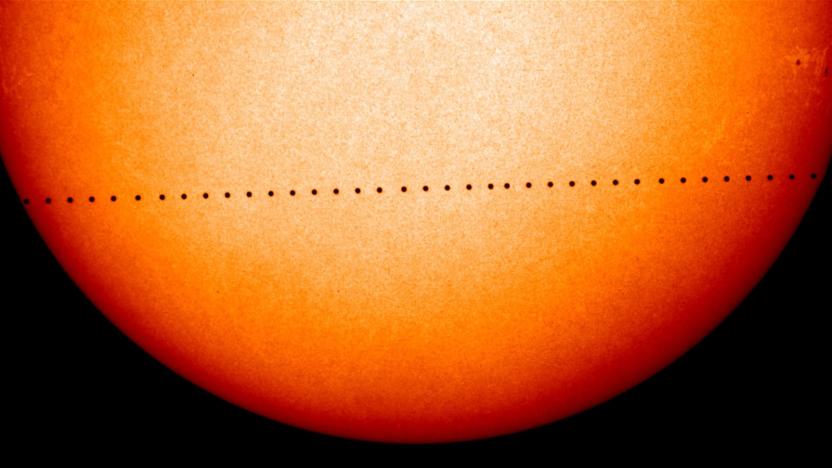
How to safely watch Mercury pass in front of the Sun today
Mercury is about to take a rare trip between the Sun and the Earth, giving viewers around the world a rare and dramatic glimpse of the solar system's innermost planet. The transit will take about five and half hours and start at around 7:35 AM ET, according to NASA. If you've always wanted to see the phenomenon, now's the time, as it won't happen again until 2032 -- and won't be seen again in North and South America until 2049.

The first ever black hole image lands scientists $3 million prize
The scientists that captured the first image of a black hole are being rewarded with a $3 million prize. The Breakthrough prize, known as the "Oscars of Science," is sponsored by Silicon Valley execs such as Mark Zuckerberg and Sergey Brin, and recognizes top scientists in fields including life sciences, physics and math.
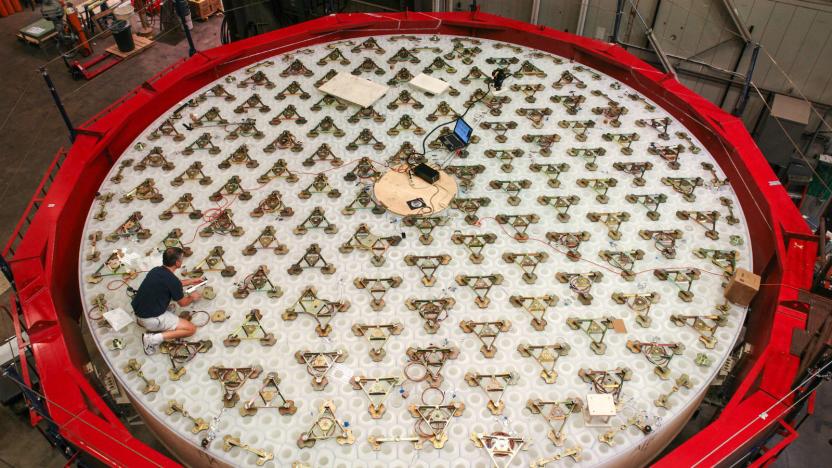
The world’s largest telescope is one step closer to completion
The world's largest telescope is one step closer to completion. This month, the team working on the Giant Magellan Telescope (GMT) completed the second of seven primary mirror segments, a process that began in January 2012.

Breakthrough searches for signs of alien life in ultra-fast light pulses
Internet investor Yuri Milner's search for extraterrestrial life now includes a hunt for, effectively, interstellar Morse code. Breakthrough Listen is teaming with the partners behind VERITAS (the Very Energetic Radiation Imaging Telescope Array System) to search for nanoseconds-long optical pulses that could indicate the presence of aliens trying to flash messages across the cosmos. The collaboration will use all four telescopes at once to check for these light-based "beacons," which would could be brighter than stars observed in the same direction.

Russia launches X-ray telescope to find 'millions' of black holes
Russia is back in the business of space observation after losing control of a radio telescope a the start of 2019. The country has successfully launched Spektr-RG, an X-ray telescope co-developed with Germany's help. The vessel will take 100 days to reach its final destination of Lagrange Point 2, where it can conduct studies in stable conditions a million miles from Earth. When it gets there, though, it could significantly reshape human understanding of the universe.

The best telescopes for beginners
By Colin Rosemont This post was done in partnership with Wirecutter. When readers choose to buy Wirecutter's independently chosen editorial picks, Wirecutter and Engadget may earn affiliate commission. Read the full guide to telescopes for beginners. Few things are as awe-inspiring as being out under a clear night sky, looking up, and gazing at a seemingly infinite array of stars overhead. So we gathered 10 telescopes, and after five months of star parties we think the Celestron NexStar 5SE is the best telescope for a curious amateur. It gathers enough light for you to view the best features of our solar system, and it gives you enough power to begin to explore deep-sky objects. In addition, this model has an electronic GPS database preloaded with almost 40,000 celestial objects, and after you calibrate the scope, it can scan the skies for you. Our overall pick for the best amateur telescope, the Celestron NexStar 5SE is a Schmidt-Cassegrain scope, a design that uses both lenses and mirrors in a relatively compact package. It has a primary 5-inch mirror, which is big enough for a light-gathering capacity that yields crisp images of some of the best objects in our solar system, from Saturn's rings to Jupiter's cloud bands, and provides sufficient power to introduce you to objects in the deep sky. This telescope operates on a fully computerized system and gives you a handheld controller to guide it. Instead of fumbling through the learning curve of reading star charts and aligning the telescope manually, you can align and focus your telescope on a myriad of celestial objects with the press of a button. Unlike with some of the NexStar 5SE's competitors, this controller worked flawlessly in our tests, offering micro adjustments and responsive tracking with the attached controller system. The NexStar 5SE weighs 15 pounds, which is very portable relative to other options out there, so you should have no problem packing it up into a trunk and setting it up on location. The Astronomers Without Borders OneSky Reflector Telescope offers the most scope for the money if you don't want an electronic GPS function (meaning it won't automatically find the specific celestial bodies you seek). One reason you may not want a manual telescope: You have to collimate (align) the telescope's mirrors, which can be tedious or frustrating if you weren't aware it had to be done. With that in mind, some of our experts told us they preferred (and even advised) learning the ins and outs of astronomy on a manual telescope, so if you're willing to put in the effort, you'll become a smarter stargazer. Like our top pick, this Newtonian-style reflector telescope has a 5-inch mirror, but it's designed to sit on a tabletop rather than on a tripod, so it works best if you have a picnic table or other support to set it on. The mirrors expand and collapse, making this model even more amenable to storing indoors. We easily spotted Saturn's rings and Jupiter and its moons with this model. Even better, free shipping is included. The traditional Dobsonian telescope, a type of instrument sometimes referred to as a "light bucket," is all about light gathering, and the images we saw through the lens of the Sky-Watcher Traditional Dobsonian Telescope were awe-inspiring. The 8-inch mirror, which is what captures the light, is larger than that of our top pick, and that means crisper, clearer images and the ability to see fainter objects that are farther away. The trade-off is that this scope is huge: Loading it into a car or even moving it around the yard is a chore, so it's best suited for folks who have a dedicated space for it at home.
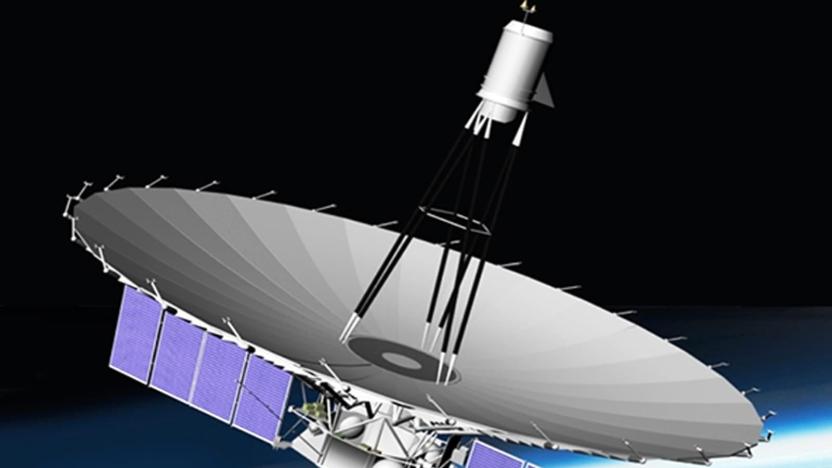
Russia lost control of an orbiting radio telescope (updated)
Russia's astronomy program is facing a significant setback. The country's orbital Spektr-R radio telescope has stopped responding to commands since January 11th. While it's still transmitting signals, the satellite effectively can't be used for future tasks in its current state. The space agency Roscosmos said it would next try to regain control and fix issues on January 13th at 2PM Moscow time (6AM Eastern), but it's not clear what would happen after that.

Researchers may have witnessed the birth of a black hole
Researchers believe they might have an explanation for an incredibly bright event that took place in a distant dwarf galaxy. Scientists observed it last June when the object in question lit up and then faded over the course of 16 days, and it has continued to spark interest and debate. Based on the data collected at the time, a number of researchers now think the event was the creation of either a black hole or a neutron star.

Astronomers detect more mystery radio bursts from beyond the Milky Way
Sure enough, astronomers have discovered even more of those mysterious fast radio bursts from outside the Milky Way galaxy. Scientists using the Canadian Hydrogen Intensity Mapping Experiment (CHIME) telescope have detected 13 different radio bursts, including six repeat bursts from the same location in a galaxy 1.5 billion light years away. Each of those bursts represents about 25 million times more energy than the Sun, and they were collected at the lowest frequencies yet (400MHz to 800MHz).

Researchers propose guiding large space telescopes with tiny satellites
Using the recently retired Kepler space telescope, scientists have confirmed thousands of exoplanets, and as its successor TESS ramps up its search, we're poised to discover plenty more. But once we find exoplanets, learning more detailed information about them requires larger, more powerful space telescopes. These telescopes would need very large mirrors, much like NASA's upcoming (and continuously delayed) James Webb Telescope, which will use its 6.5-meter-wide mirror to observe extremely distant galaxies. And like the James Webb Telescope, they very well could have a mirror made up of many individual segments -- Webb's has 18.

Hubble telescope 'mother' Nancy Grace Roman dies
The astronomy world is poorer off today. Nancy Grace Roman, the first chief of astronomy at NASA's Office of Space Science, died on December 25th at 93. She was widely considered the "mother" of the Hubble Space Telescope, persuading the scientific community to rally around the concept and campaigning for funding. While Hubble launched 11 years after her retirement, there's little doubt that it was her efforts that made the telescope a reality.

NASA bids Kepler 'goodnight' with last set of commands
The Kepler Space Telescope has officially gone to sleep for good. On November 15th, the death anniversary of its namesake German astronomer Johannes Kepler, its ground team sent it a series of "goodnight" commands. They were meant to disable the telescope's safety modes that could switch it back on and to shut down its transmitters to completely cut off communications. Since the observatory is spinning, the team had to time their beams -- a task they successfully accomplished, because according to Kepler's Twitter account, it indeed received the final set of commands.
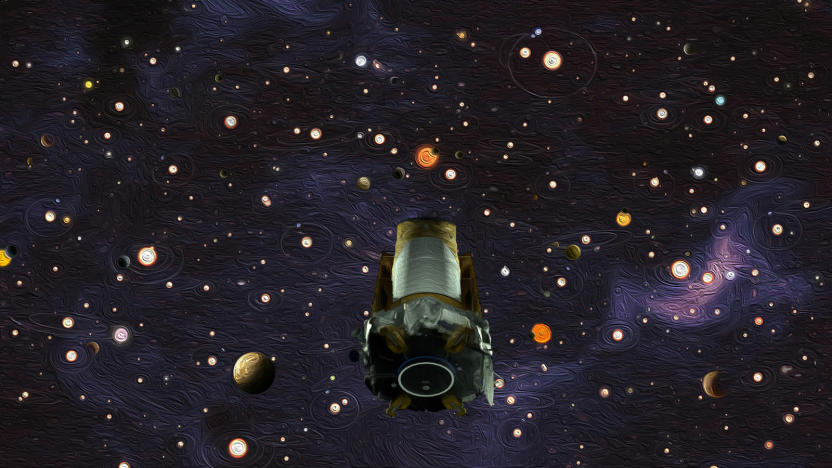
The Kepler space telescope's end has finally come
The time has finally come to say goodbye to Kepler, the spacecraft that exceeded expectations throughout its mission and has so far confirmed more than 2,600 planets outside of our solar system. In March, NASA warned that Kepler's end might be nearing as it was running very low on fuel, and scientists running the spacecraft have put it to sleep multiple times over the past few months in order to preserve what fuel it had left. But even as recently as last month, Kepler demonstrated that it still had enough juice to continue collecting data and launched into its 19th observation campaign. However, Kepler has now run out of fuel and NASA has retired the spacecraft after nine years of observations.






